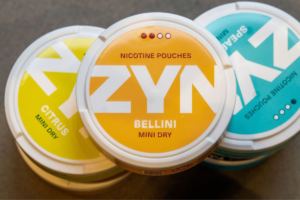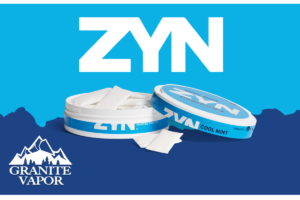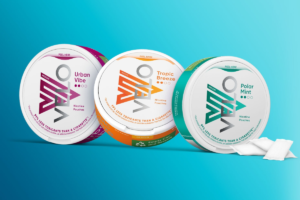Smokeless varieties of tobacco including snus have been given great attention in the changing backdrop of tobacco consumption due to their perceived lesser health hazards when compared to traditional smoking. However, it is the addictive nature and possible health consequences that make the nicotine content in these other choices a point of contention. This study examines the Camel Snus nicotine levels as well as some other leading smokeless tobacco brands to give a holistic account of their chemical makeup and health concerns involved. In doing so, we will use extensive analysis and comparison so as to bring out the complexities that are on play in characterizing nicotine contents within different smokeless tobacco products. In this way, we strive to provide necessary facts for consumers, healthcare providers and policy makers concerning various forms of smokeless tobacco with regard to the levels of nicotine therein thus enabling them make informed decisions.
What is Camel Snus and How Does it Compare to Other Smokeless Tobacco Products?
Understanding the composition of Camel Snus
Camel Snus is a brand name used to refer to the latest crop of smokeless tobacco products and it is made of ground tobacco leaves, water, salt, flavorings and preservatives. These ingredients are selectively mixed to produce a moistened finely grounded product that is meant for oral use. Unlike other conventional snuff or chewing tobacco brands, Camel Snus comes in small pouches that resemble tea bags but can be used discreetly. The user places a pocket between the gum and lip which enables nicotine to pass through the mucous membranes of the mouth. This method is often promoted as a smoke-free option for people who want to avoid having ash or pollution from traditional smoking habits.
Camel Snus differs from other smokeless tobacco brands due to its specific formula and controlled manufacturing process. Creating this kind of Camel Snus does not involve fermentation but rather Pasteurization. Through this, they claim that several dangerous chemicals that are commonly present in tobacco have been reduced while increasing the product’s shelf life. However, what matters most here is nicotine content which is known as main addictive agent in cigarettes. The exact chemical composition including nicotine levels within Camel Snus compared to other typical smokeless tobacco brands necessitates an evaluation of potential health risks related with using this product.
Comparison of Camel Snus with Swedish Snus
There are certain vital parameters that highlight the difference in contents, manufacturing process and health implications between these two brands.
- Ingredients and Formulation: The ingredients used for making both Camel Snus and its Swedish counterpart is similar. However, traditional Swedish Snus tend to have less preservatives and artificial flavors by concentrating mainly on tobacco purity through a classic recipe.
- Manufacturing Process: One major distinction lies in the manufacturing process. Swedish Snus is subjected to specific pasteurization which is tightly controlled under Swedish Food regulations; it aims at reducing harmful bacteria while maintaining the flavor of tobacco. This differs from the production method of Camel snus, which also uses pasteurization but may differ in the exact standards and protocols, thus being more complied with U.S. regulations.
- Nicotine Content: The nicotine content varies widely among different brands and types of Snus. Unlike most varieties of Camel Snus products, typically with fairly consistent amounts of nicotine per pouch, Swedish market offers a wider range of alternative nicotine levels including those much higher than these values. This variability allows users to have options depending on their preferences as well as nicotine tolerance level.
- Health Impact: Both products claim to be better than smoking due to lack of combustion or smoke inhaled. Nonetheless, comparing their health impacts becomes complex because it depends on the frequency, amount used plus individual illnesses. Studies performed in Sweden indicate that using snuff reduces risks associated with several smoking-induced diseases. Nevertheless, it does not come without its own potential health hazards such as an increased likelihood for developing some cancers and cardiovascular diseases.
- Market and Accessibility: The Scandinavian country boasts long-established tradition plus a strong market base for selling this product. It has quality measures set out by law made by Sweden itself concerning its manufacture. On the other hand, since it’s an American brand designed specifically for US market following FDA requirements; moreover having American customers focused upon something uniquely American.
By these parameters one can conclude that although both are smoke-free experiences, they present a number of differences in terms of the way they are made, nicotine levels and manufacturing standards thus giving users distinct choices depending on their preferences and perceived level of risk.
Exploring the Nicotine Levels in Camel Snus
Camel Snus Nicotine Content Analysis Explored
It is important to note when investigating nicotine content levels in Camel Snus that it varies greatly between different flavors and product lines. Nicotine concentration in Camel Snus is measured and stated in milligrams (mg) per unit which directly impacts on the satisfaction of the user, as well as his/her overall experience. By having different contents for nicotine, users are able to make a choice based on their preferred taste and tolerance. This can be attributed to factors such as; type of tobacco used, processing methods applied or addition of nicotine during manufacturing process that tends to affect the resultant nicotine concentration. In usual cases, the amount of nicotine present in Camel Snus could vary from 8 mg/portion to as much as 14 mg/portion bringing into focus why care has to be exercised by product end-users while buying products for their specific needs targeting at fulfilling their demands for nicotine.
The Use of Nicotine in Smokeless Tobacco Products
Nicotine is at the core of smokeless tobacco products like snus. It creates addiction related properties seen in all tobacco products mostly because it acts like a stimulant drug. Unlike smoking where nicotine gets into the lungs through inhalation, smokeless tobacco absorbs it through oral tissues such as gums or cheeks etc., hence giving rise to different sensations occasioned by slow onset effects compared with instant rush felt during smoking.
From technical aspect alone, determining strength of smokeless items depends upon its nicotinism thereby influencing its appeal towards various types of users. Regular customers who have been accustomed to using these goods may prefer higher amounts of nicotinism while beginners might decide on those with lesser ones for easier experiences. Also, there is controlled release feature that allows one to feel satisfied longer after consuming smokeless tobacco; this is quite unique from being subjected but only momentarily before craving again which occurs when someone intakes smoked tobacco.
It is critical for consumers to have a proper understanding of nicotine in smokeless tobacco products, so that they can make informed decisions regarding their usage. Additionally, it highlights the need for manufacturers to disclose nicotine content and possible addiction, while adhering to regulatory standards in order to promote consumer safety and awareness.
Determining Nicotine Levels per Pouch in Camel Snus
The nicotine levels in Camel Snus products can vary greatly, reflecting the wide range of nicotine choices and preferences by different consumers that the brand serves. For example, lighter varieties of Camel Snus contain about 8 milligrams of nicotine per pouch while the stronger ones have approximately 14 milligrams. Different people will have different needs for their nicotine intake depending on what they prefer to use.
This calls for detailed analysis of nicotine quantities within snuff tobacco so that its accuracy and compliance with claimed levels can be ascertained. This is usually done through chromatographic methods most commonly high performance liquid chromatography (HPLC) which is used to quantify the amount of nicotine in every batch of a product. Such research provides customers with accurate details concerning all varieties, hence helping them make informed decisions on how much they should use.
Furthermore, these data points perform two functions: one being assisting users to gauge their own consumption as part of possible efforts to reduce nicotine uptake and the other being enabling regulators to confirm if there are any violations against legal requirements regarding nicotine content. It highlights the need for rigorous quality assurance protocols backed by full disclosure regulations across sectors aimed at safeguarding public health interests and consumer rights.
Implications of Camel Snus and Smokeless Tobacco Products on Smoking Cessation
Efficiency of Smokeless Tobacco Products in Smoking Cessation.
Public health professionals and researchers have been debating on the effectiveness of smokeless tobacco products such as Camel Snus, as effective tools for smoking cessation. According to several studies, smokeless tobacco could be a potentially safer option than traditional cigarettes for individuals who wish to lower their risks of contracting various diseases. However, people’s perspectives and actual results of using these products to quit smoking are varied.
Critically, multiple considerations determine the success of smokeless tobacco in quitting smoking including individual’s history in smoking, level of addiction, and having an all-inclusive support system for cessation. Importantly, while these products contain less carcinogens compared to combustible cigarettes, they are not risk-free. The presence of nicotine which is highly addictive raises concerns about dependence and a bridge between smokeless tobacco use and smoking instead of total abstinence.
Additionally, it cannot be underestimated that proper guidance and cessation programs that couple with usage of smokeless tobacco products are critical. Controlled intake through gradual decrease in nicotine intake via such products may create room for quitting among certain persons. Nevertheless, it remains unknown whether these goods can aid successful transition from any form of tobacco usage without structured interventions and support.
In conclusion, while there is potential for smokeless tobacco products to aid in smoking cessation under specific circumstances their efficacy depends on a broader strategy encompassing education, supportive measures and careful monitoring against patterns leading towards its misuse. Ongoing research must establish the exact role these products can play in public health approaches aimed at reducing the prevalence of smoking .
Comparing SmokEless Tobacco Products for Quitting Smoking
Analysis of the Nicotine Content in Diverse Snus Brands
Largely, the snus’ nicotine content is a significant factor affecting their potential as smoking cessation alternatives. A comparison between some leading brands shows huge variance in nicotine levels which might influence how they curb cravings and withdrawal symptoms. Here are some of the key findings:
- General Snus: Typically, it has 8 mg nicotine per gram of it. It has a variety of flavors and strengths that cater for both beginners as well as those who have been using these substances for long with an aim to reduce their levels of addiction.
- Siberia Snus: At nearly 43mg/gm, Siberia Snus is one of the strongest products available today. It is highly recommended to heavy smokers switching over from cigarettes due to its high nicotine contents.
- Zyn: Zyn on the other hand provides packets with an alternative to smokeless tobacco such as pouches and lozenges containing nicotine strength of either 3 or 6 milligrams. This brand is noteworthy because it does not contain tobacco so it eliminates specific chemicals present in traditional snacks.
- Ettan Snus: Like General, it contains about 8-9 mg/gm nicotine. Ettan’s taste is pure tobacco without any additional flavorings unlike many other brands; this makes it appeal more to people who smoke looking for a real cigarette brand.
- Catch Snus: For instance, Catch offers about 8mg/gm in terms of taste variation thus targeting particular users, also need a great deal of nicotine intake through oral chewable forms.
In conclusion, this comparative analysis implies that when considering snuff use as an option towards quitting smoking one must consider what kind to choose based on his/her intended level of dependence upon this substance. To manage cravings efficiently while avoiding the risk of starting another addiction, one should go for the brand that has a proper nicotine amount.
Regulatory Measures and Health Considerations Regarding Nicotine Content in Camel Snus
Monitoring Nicotine Levels in Snus and Tobacco Control Strategies
Regulatory bodies have recognized the need for monitoring and controlling nicotine levels of snus brands due to its wide range among different brands. The main drive behind such initiatives has been ensuring public safety and informing users about the nicotine content so that they can make informed decisions concerning their use.
In pursuit of tobacco control, government agencies like the United States Food and Drug Administration (FDA) have put stringent guidelines in place for manufacturing and labeling tobacco products including snus. These rules require producers to state accurately on their packaging the amount of nicotine contained in each product, hence enabling transparency to consumers. Moreover, these efforts are enhanced by informative campaigns that enlighten people about the risks associated with addiction to nicotine as well as promoting usage of cessation aids which are verified safe and effective.
The tobacco industry is undergoing a lot of scrutiny aimed at bringing down rates of nicotine addiction.Among these measures are restrictions on advertising mainly targeted towards young populations and programs that discourage initiation into tobacco use.The combined impact of such regulatory measures together with health concerns is indicative of a holistic approach towards addressing snus nicotine content among other tobacco products thereby contributing to harm reduction at large.
Health Risks Associated with High Nicotine Concentrations in Smokeless Tobacco
Multiple complex health risks associated with high nicotine levels in smokeless tobacco products like snus justify utmost vigilance. Initially, nicotine is profoundly addictive; hence its escalated presence in any form of tobacco can hasten habituation leading to complex quitting strategies for smokers. Furthermore, prolonged exposure to dopamine has been found to increase chances for cardiovascular diseases like hypertension as well as heart attacks due it effect on heart rate and blood pressure.
Furthermore high amounts of smokeless tobacco products containing nicotine may result in gum disease or leukoplakia which precedes oral cancer. These conditions lead to a decreased quality lifestyle but also pose important health hazards that might be long-lived. However, these risks have to be known by the consumers and potential users of these products, while regulatory agencies should continue shaping the public perception towards safer alternatives with nicotine.
Insights into Moisture Content and Nicotine Absorption in Camel Snus
Camel Snus’ intricate smokeless tobacco product formulation makes a subtle connection between moisture content and nicotine absorption. The amount of moisture applied is crucial to the overall perception of nicotine strength and its concentration in snus products. In snus with higher moisture levels, it rapidly releases nicotine into the oral mucosa for more immediate absorption. Evidently, this quick method of delivering nicotine enhances the addictive nature of the product as well as its intensity.
Like other smokeless tobacco products, Camel Snus has been formulated to balance moisture content in order to achieve user satisfaction while ensuring efficient delivery of nicotine through optimal moisture levels that enable consistent experiences expected of adult customers . Nevertheless, an important point to note is that such enhanced efficiency in delivering nicotine raises specific health concerns. The fast and effective uptake of nicotine can cause greater addiction rates among users, as well as other health risks attributed to nicotine above.
In these lightings, monitoring the saturation level or even regulating it by regulatory bodies and health professionals has been stressed out as necessary when it comes to smokeless tobacco control measures. Such steps are aimed at minimizing the danger imposed on people by excess consumption of nicotines while acknowledging the intricate relationship between water contents inside moist grounds and what they transmit along their ways concerning how much nicotines a person absorbs during smoking a cigarette.
The Future of Smokeless Tobacco and Novel Nicotine Products
Investigating New Nicotine Delivery Approaches in Camel Snus and Similar Products
The shift to innovative nicotine delivery systems such as Camel Snus and the like, points out a pivotal step forward in smokeless tobacco’s evolution. These are developed to enhance consumer experience through intuitive usability and controlled nicotine delivery that caters for adult consumers seeking smoking alternatives. Among others, the parameters that shape these innovative systems are:
- Controlled Release Technology: This is aimed at ensuring slow release of nicotine over time to satisfy cravings of nicotine without the high’s and lows commonly associated with conventional smoking. The objective is to tame impulsive use patterns that result from sudden rise of nicotine.
- Moisture Content Optimization: As noted earlier, moisture content in snus products is carefully adjusted to combine user satisfaction with health implications. They make it easier for nicotine absorption through the oral mucosa by reducing friction.
- pH Level Adjustment: The pH of snus (whether acidic or alkaline) influences how well one can access its nicotine component. Depending on how much free base nicotine is present due to adjusting pH levels, it could be absorbed into blood vessels more easily or not.
- Flavor Profiling: Apart from delivery of nicotine, flavor adds significant value in these products. Numerous flavors have been developed targeting customers’ preferences while obliterating the pervasive bitter taste of tobacco.
- Packaging and Portability Innovations: Contemporary smokeless tobacco products are characterized by discreet packaging which enhances portability and ease of use. These kinds of advancements make them preferable options among non-smokers thus minimizing cigarette addiction.
These criteria are crucial when considering how Camel Snus and other similar smokeless tobacco products have evolved in line with consumer needs and regulations.Evolutionary changes in the designs of these solutions mirror a fusion between scientific knowledge as well as market insights leading to less risky ways for conventional cigarettes use.
Impact of the New Marlboro and Camel Smokeless Products on the Tobacco Industry
The introduction of innovative Marlboro and Camel smokeless cigarettes has dramatically changed the dynamics in the tobacco market, which can be seen through several crucial parameters:
- Market Demographics: The consumer base has shifted noticeably, with more young adults and continuing smokers turning to these less harmful alternatives. It is partly due to perceived lower risks to health associated with their use as well as discrete nature.
- Regulatory Landscape: The launch of these new products has prompted regulatory institutions globally to reconsider laws relating to tobacco products. This is including discussions on taxation, use restrictions, and advertising guidelines that aim at balancing public health concerns against individual freedoms.
- Competitive Response: Traditional and up-and-coming tobacco manufacturers have been forced into innovation resulting in wider range and increased sophistication of non-combustible smoking material. Such competition further drives forward technological advancements and market diversification.
- Public Health Implications: Although novel smokeless tobacco product’s long-term health effects under investigation are still a matter of study, an early evidence suggests that they could be less risky than traditional smoking. Any potential shift might inform future policies aimed at public health or quitting smoking.
- Sales and Marketing Strategies: These products’ marketing approaches have advanced from what they were initially, targeting online platforms as well as customers segmented by age. Such strategies place emphasis on convenience, variety in flavors among other things when it comes to smokeless tobacco preparations that are compatible with one’s lifestyle.
Finally, the penetration of fresh Marlboro and Camel smokeless “chews” represents an intricate interplay between consumer behavior patterns, regulatory modifications, competitive forces within the markets being served, and consideration for public wellbeing. Innovation-driven revolution aimed at reducing harm marks a transformation occurring in the tobacco industry.
Reference sources
- “Smokeless tobacco–snus: a critique of usage pattern & influencing factors” – source This is an academic research paper from Diva Portal that discusses the usage patterns and influencing factors of smokeless tobacco products like snus. It offers a scientific approach to understanding how these products are consumed and the factors influencing their use.
- “An Assessment of Camel Snus Abuse Liability” – source This assessment from the Department of Health and Human Services provides comprehensive data on the nicotine content of Camel Snus and other smokeless tobacco products. It is a reliable source due to its governmental origin and detailed research.
- “Characteristics of “American Snus” and Swedish Snus products for sale in Massachusetts, USA” – source This article from the Oxford Academic Journal provides a comparative analysis of American and Swedish Snus products. It includes data on nicotine levels and usage patterns, offering valuable information for readers interested in understanding the differences between these products.
- “Animal models to assess the abuse liability of tobacco products: Effects of smokeless tobacco extracts on intracranial self-stimulation” – source This study from ScienceDirect uses animal models to assess the potential for abuse with smokeless tobacco products. The research focuses on the effects of nicotine content in these products, making it a relevant source for understanding the addictive potential of snus.
- “Levels of (S)-N′-Nitrosonornicotine in U.S. Tobacco Products”—source This academic article analyzes the levels of (S)-N’-Nitrosonornicotine, a known carcinogen, in various U.S. tobacco products, including Camel Snus. This resource is valuable for readers interested in the health risks associated with different tobacco products.
- “Tobacco litigation without the smoke-cigarette companies in the smokeless tobacco industry” – source This legal document from HeinOnline provides insight into the litigation faced by cigarette companies in the smokeless tobacco industry. It offers a unique perspective on the legal and ethical issues surrounding marketing and selling products like Camel Snus.
Frequently Asked Questions (FAQs)
Q: What is the nicotine content in Camel Snus compared to other smokeless tobacco products?
A: Camel Snus, produced by Reynolds Tobacco Company, contains varying nicotine levels, with total nicotine levels often higher than in many other smokeless tobacco products. Entire and unprotonated nicotine content can significantly influence the product use experience for snus users, with Camel Snus typically aiming for levels that satisfy the nicotine cravings of former cigarette smokers transitioning to oral tobacco products.
Q: How does the nicotine in the novel Marlboro and Camel Snus compare?
A: Both Marlboro Snus, created by Philip Morris, and Camel Snus have been developed to offer an alternative to cigarette smoking. While the specific nicotine per pouch may vary, both brands formulate their products to contain enough nicotine to meet the demands of smokers looking for an alternative. Each brand monitors tobacco-specific n-nitrosamines and nicotine levels closely to maintain a consistent user experience.
Q: Are flavored smokeless tobacco products like Camel Snus Winterchill safer than cigarette smoking?
A: Although products such as Camel Snus Winterchill offer a flavored tobacco experience that might be perceived as less harmful, both the National Cancer Institute and the Agency for Research on Cancer caution that all nicotine and tobacco products carry health risks. Flavored smokeless tobacco products continue to contain nicotine and other harmful chemicals, although they usually deliver these at lower levels compared to cigarette smoking.
Q: What impact does snus use have on tobacco users transitioning from cigarettes?
A: For tobacco users looking to quit cigarette smoking, using snus or nicotine gum offers an alternative that can significantly reduce their exposure to the harmful tar and carcinogens found in cigarettes. However, while snus products made by companies like British American Tobacco and Reynolds Tobacco Company may have different levels of unprotonated nicotine, the goal is to provide a satisfactory nicotine hit to aid in smoking cessation efforts.
Q: How do health authorities view snus as a cessation tool?
A: Major health organizations recognize snus and other medicinal nicotine products as potential tools for smoking cessation. According to the National Cancer Institute and the Agency for Research on Cancer, when used appropriately, snus may help some smokers quit by delivering nicotine in a less harmful manner than cigarette smoking. Nevertheless, there is an emphasis on ongoing monitoring of tobacco product use, including snus, to ensure public health safety.
Q: What is being done to monitor the safety of smokeless tobacco products like Skoal Snus?
A: Agencies such as the FDA and international bodies focus on monitoring tobacco-specific n-nitrosamines and nicotine in novel and existing oral tobacco products, including Skoal Snus. These efforts involve checking the levels of unprotonated nicotine and the presence of potentially carcinogenic compounds to ensure consumer safety and compliance with regulations aimed at reducing tobacco use among youth and adults alike.
Q: Are there significant differences between snus products’ unprotonated nicotine levels?
A: Yes, there can be significant differences in the higher unprotonated nicotine levels among snus products, which impacts their potential use as smoking cessation aids. Higher levels of unprotonated nicotine increase the bioavailability of nicotine, making it more easily absorbed by the body. Brands like Camel Snus and Marlboro Snus formulate their products with this in mind to offer a satisfying experience to former or current tobacco users seeking alternatives to cigarette smoking.
Q: How do tobacco product regulations affect the availability and formulation of snack products?
A: Tobacco product regulations, including those focused on monitoring tobacco-specific n-nitrosamines and nicotine, directly impact the availability and formulation of snus products. Manufacturers must comply with these regulations, which often involve disclosing total nicotine and unprotonated nicotine levels and limiting certain additives in flavored tobacco products. These measures aim to ensure product safety while minimizing the appeal of these products to non-users, particularly among youth.












